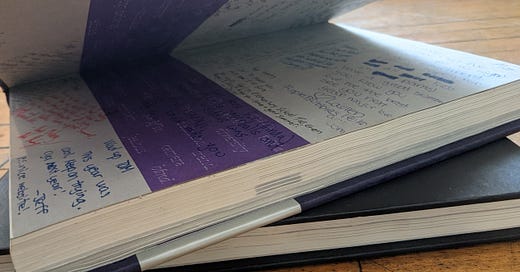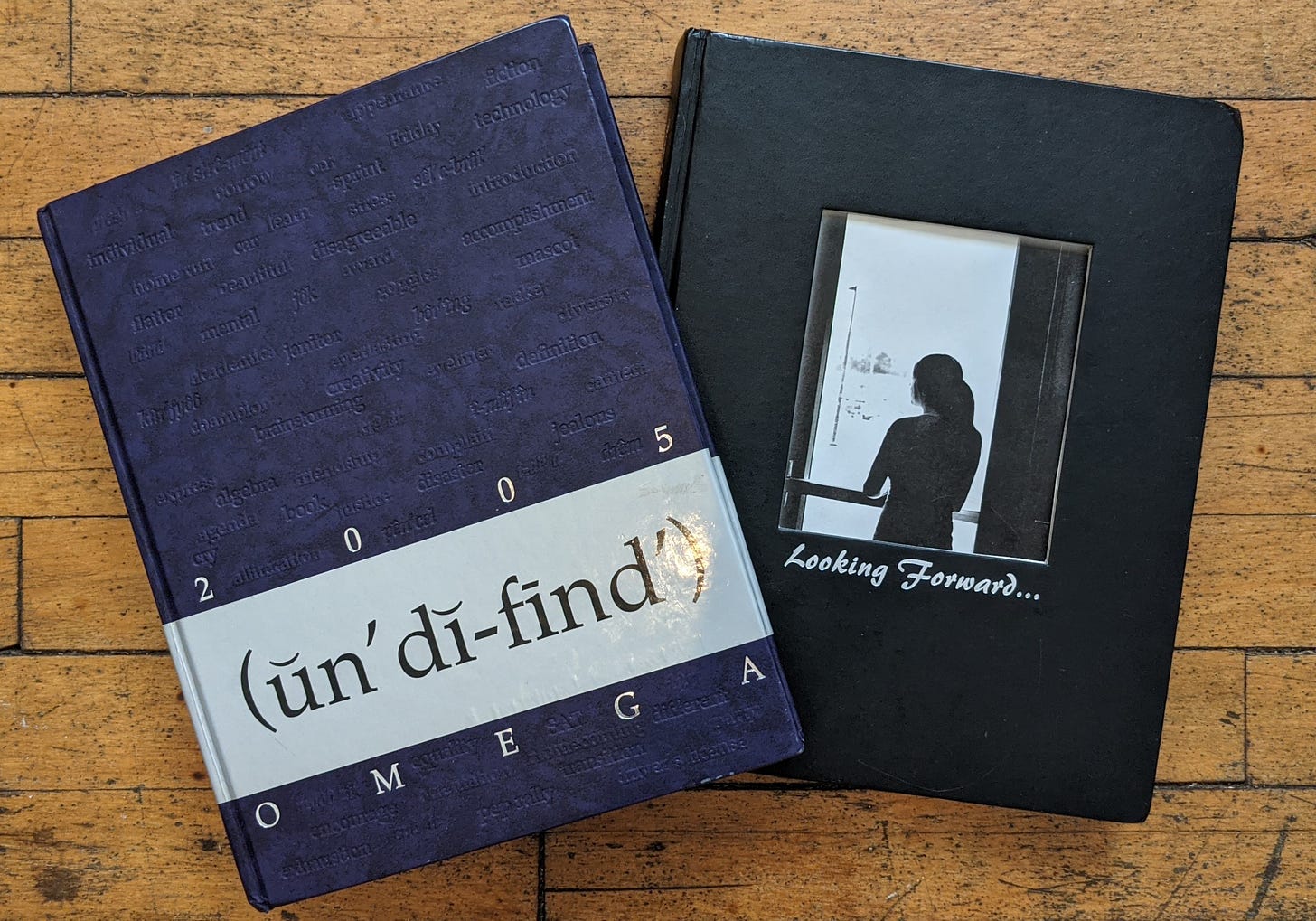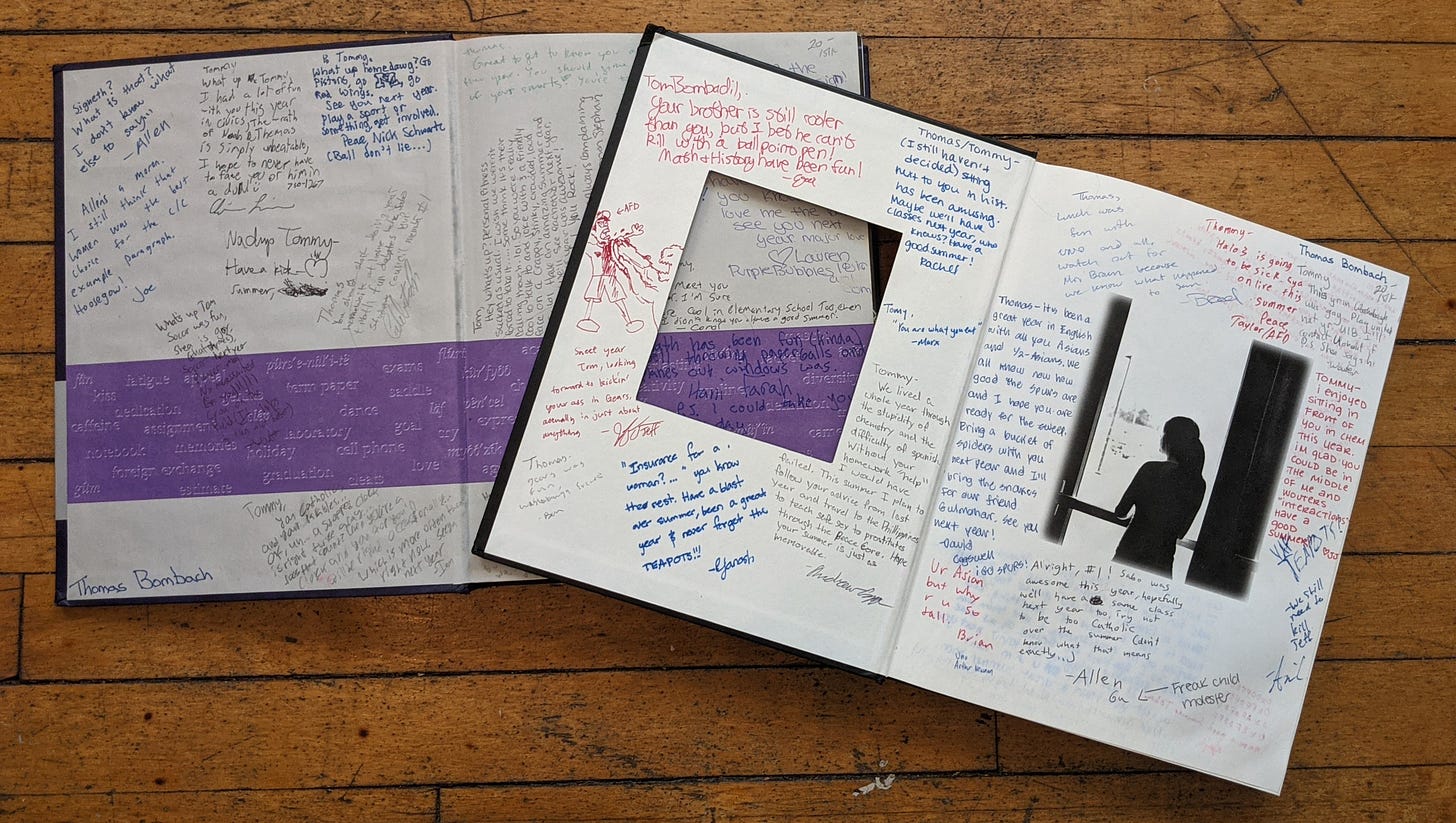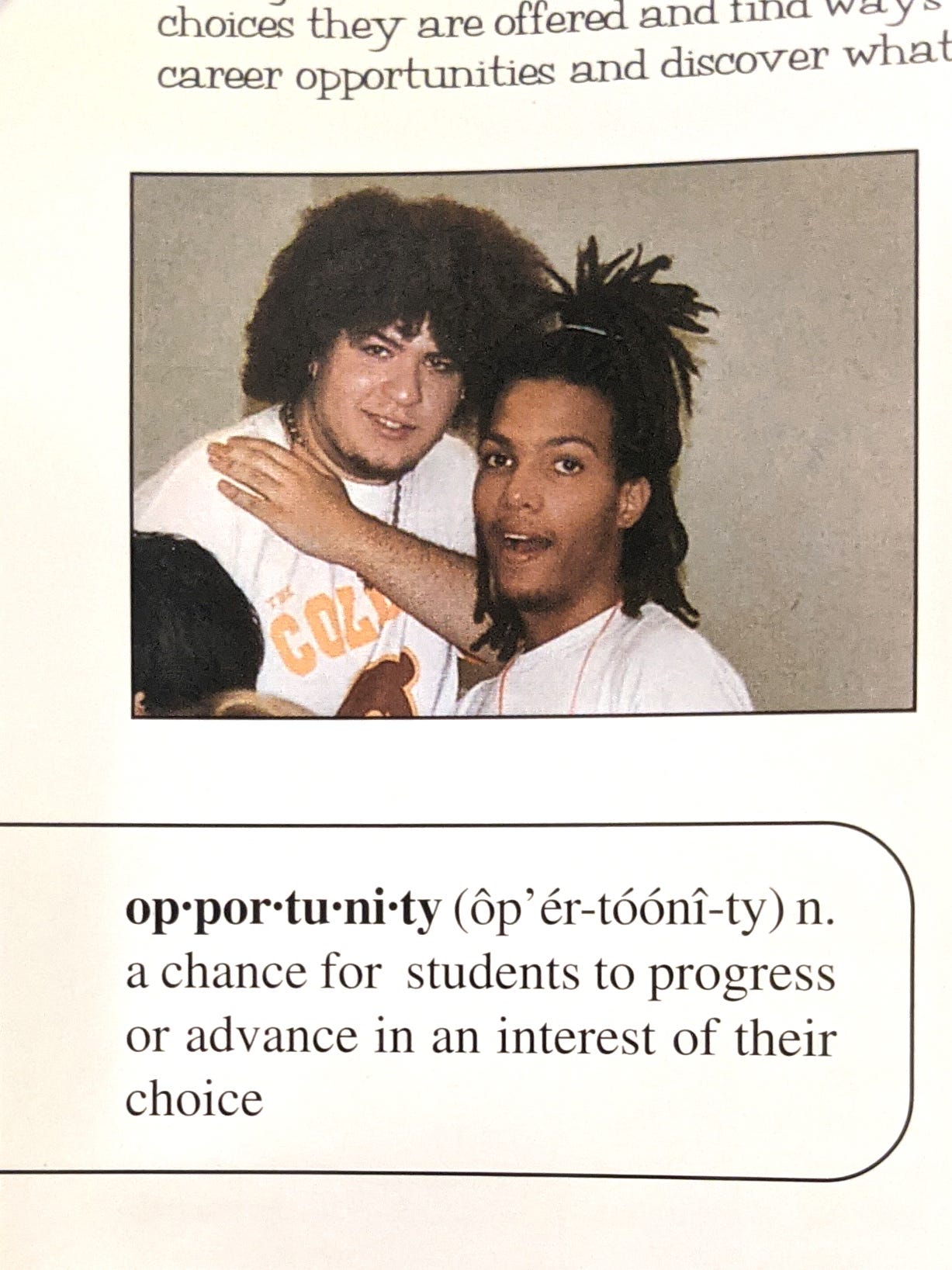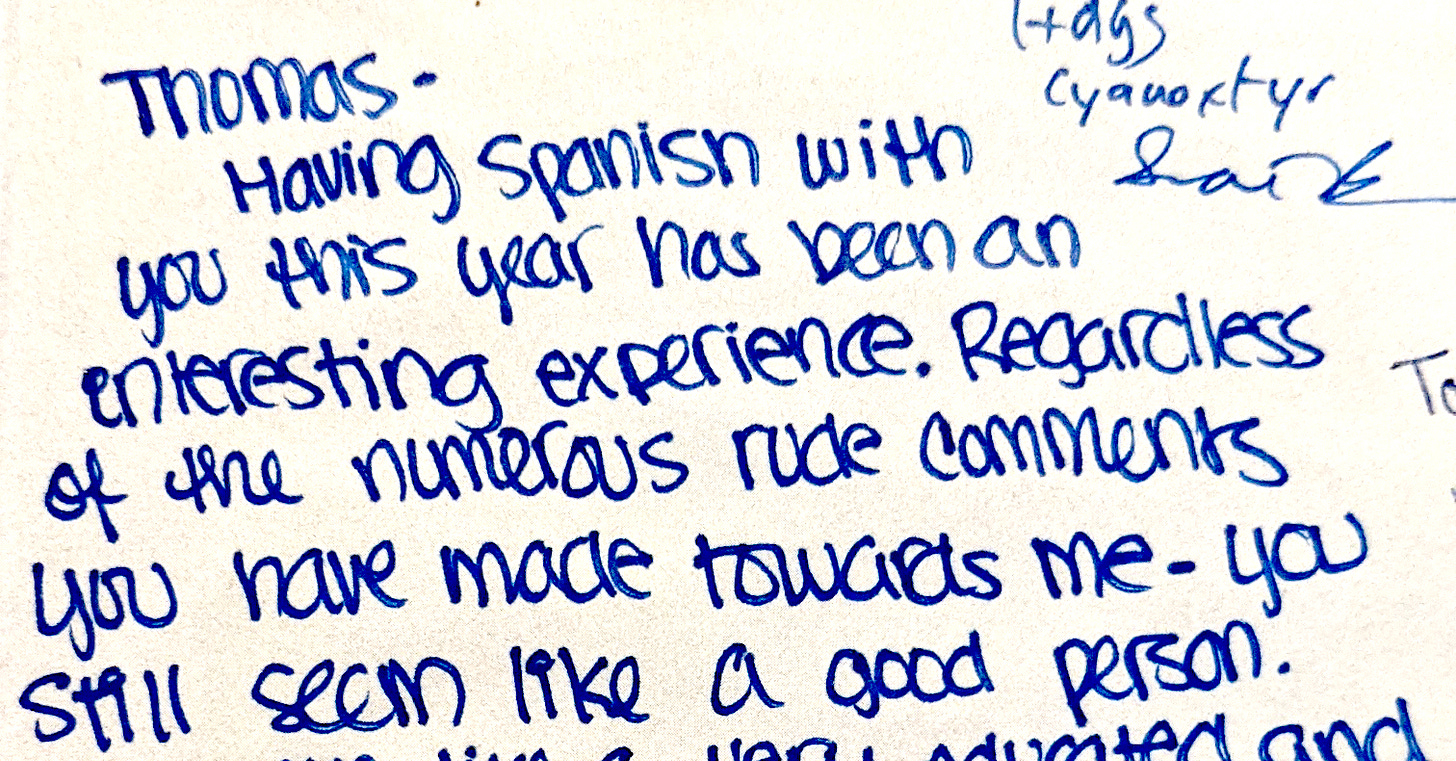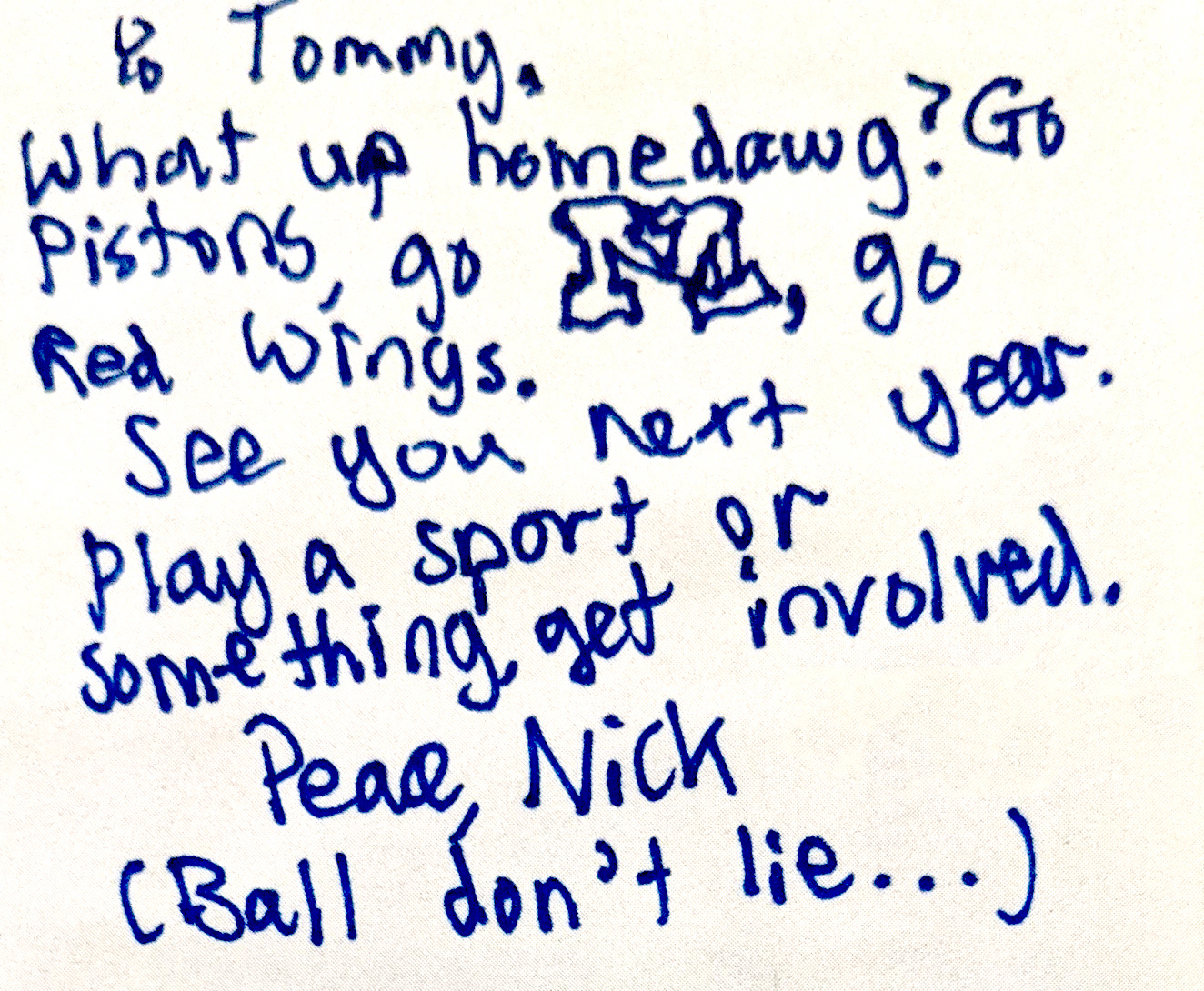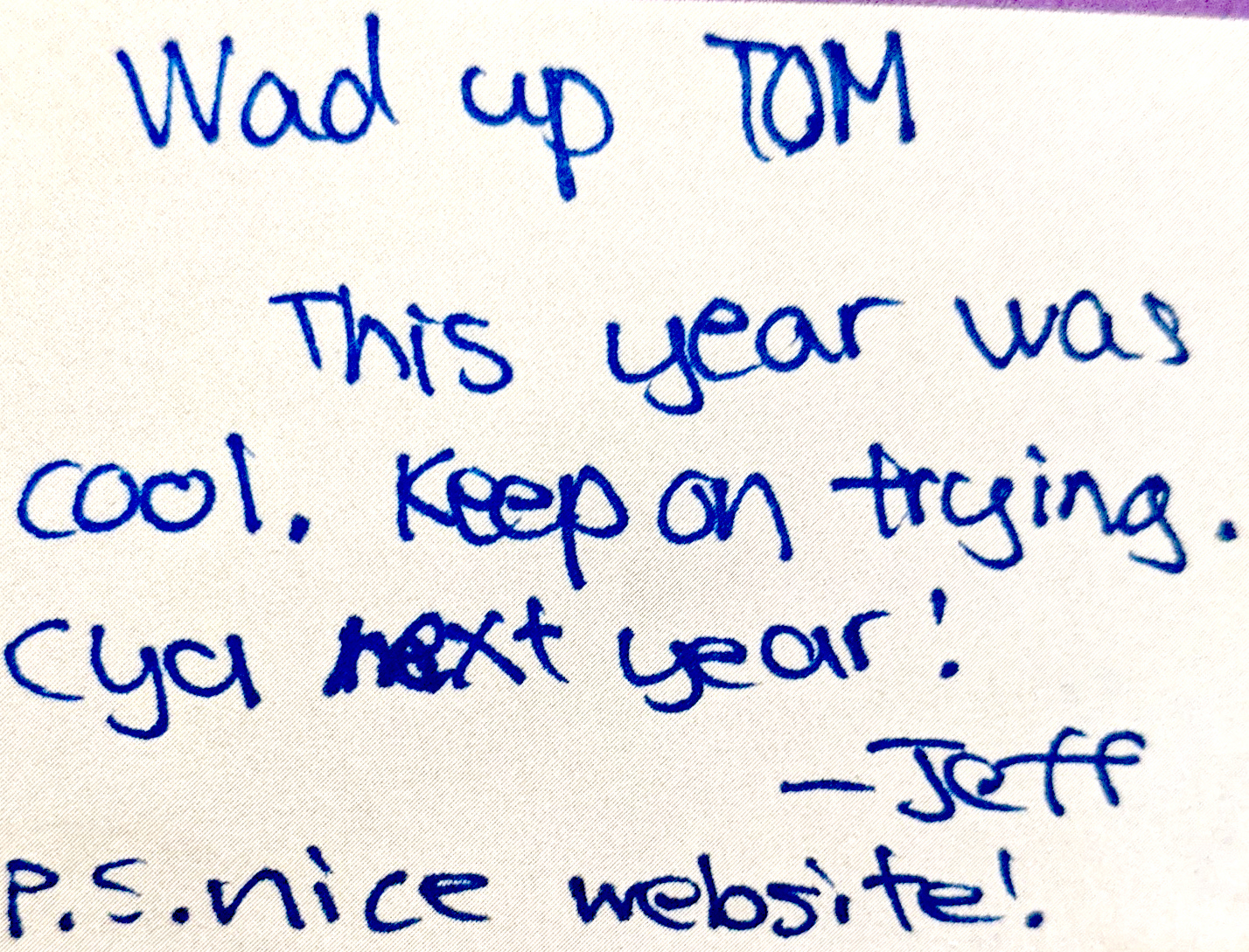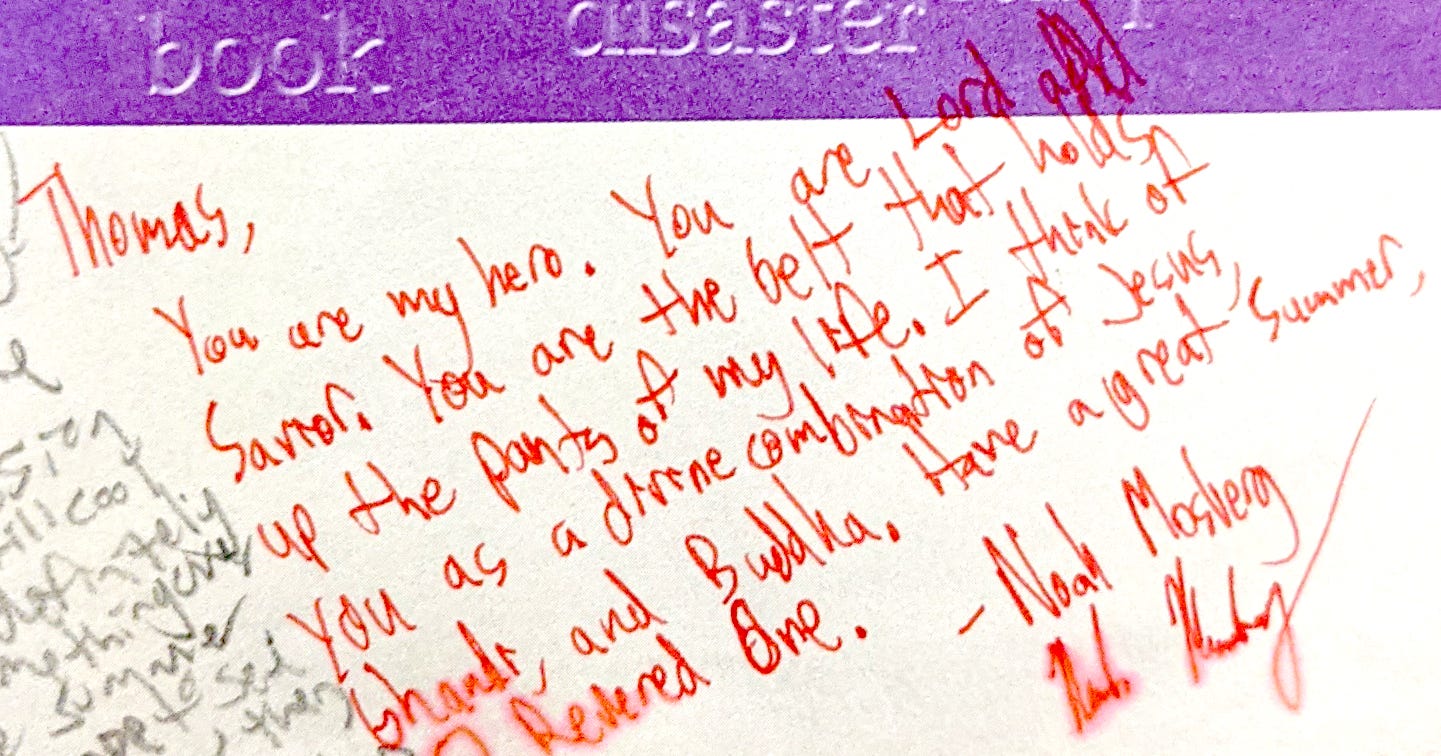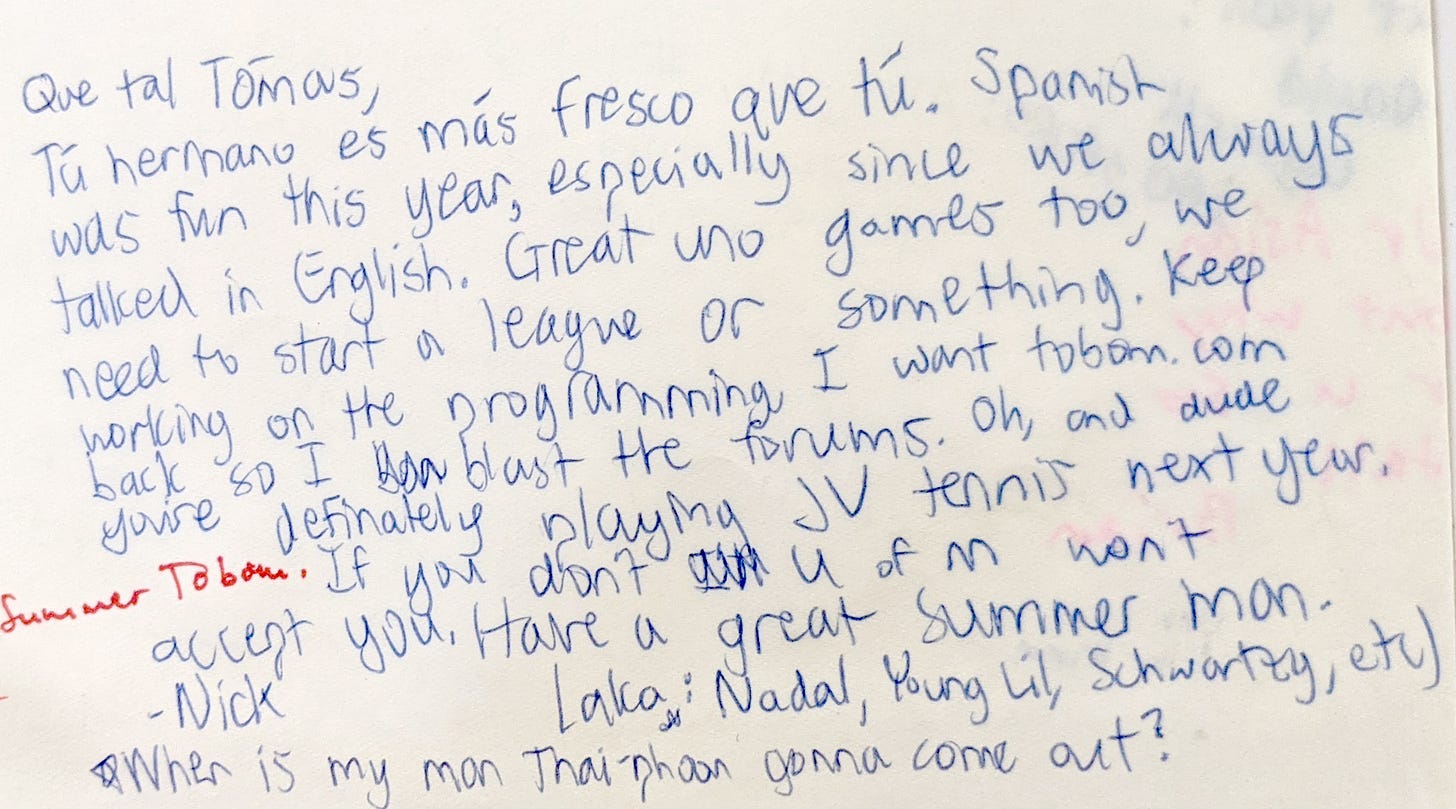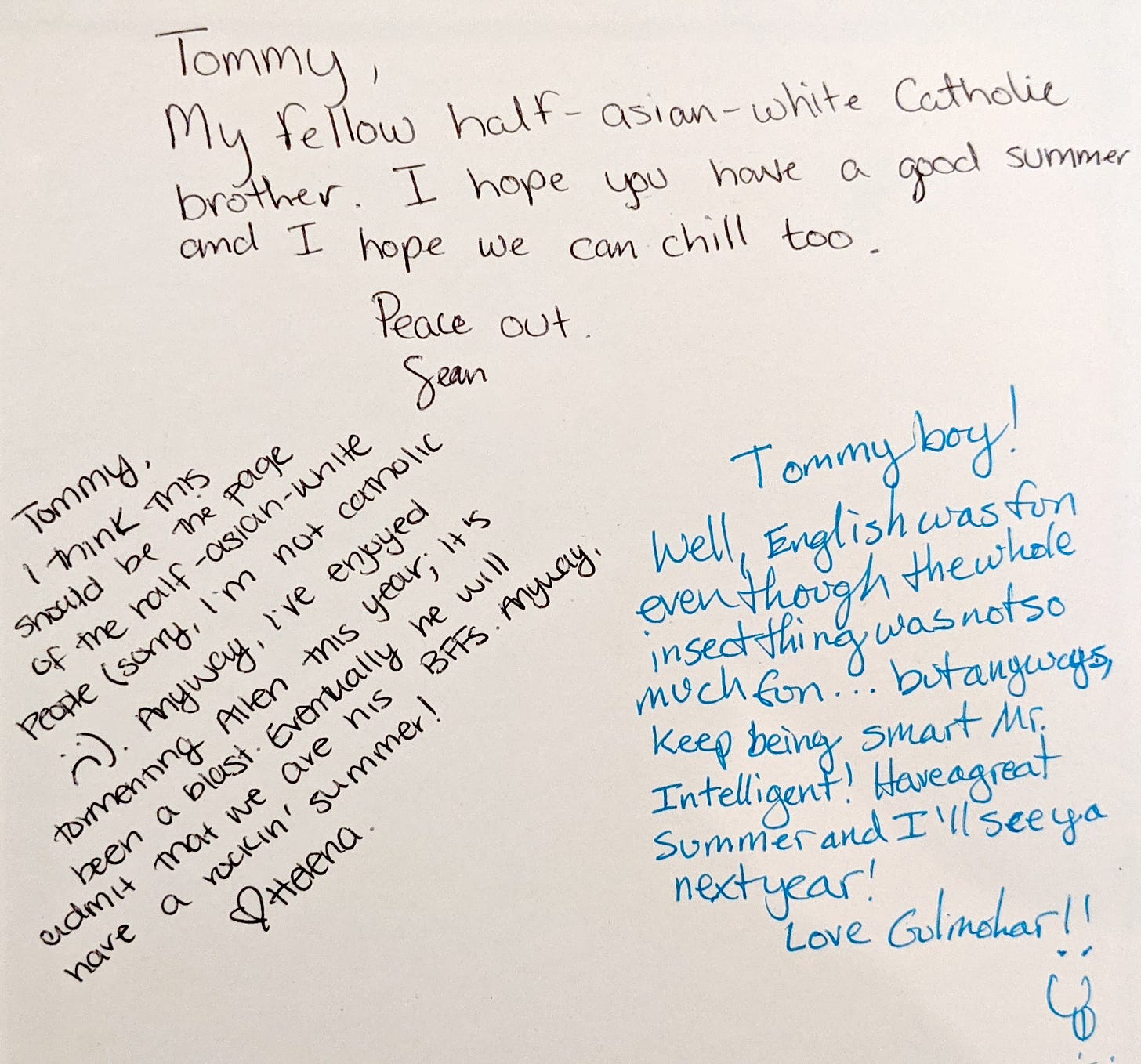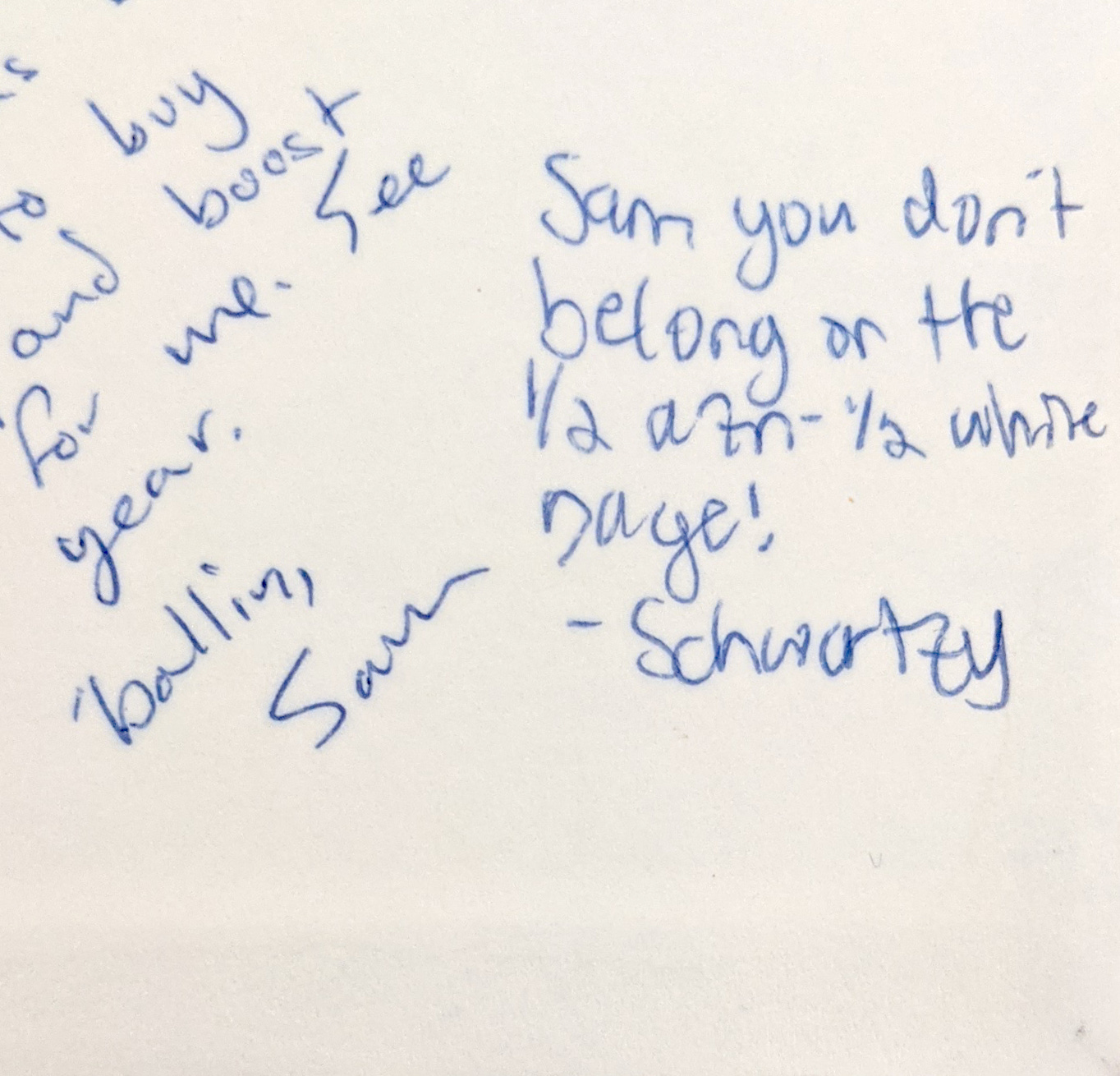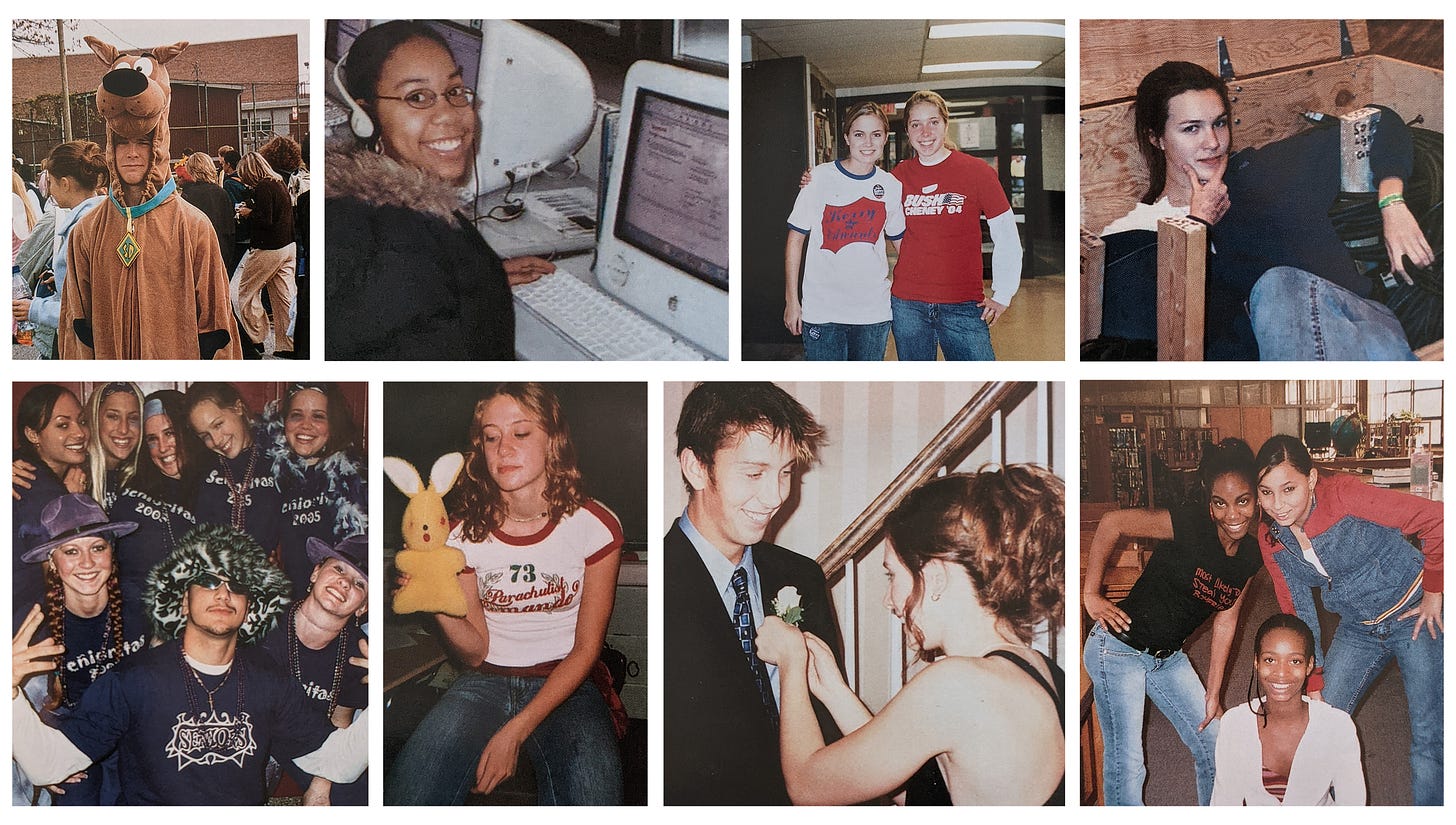These yearbooks were another antique store find, and I’m pretty sure I didn’t notice they belonged to the same student until I had lugged them all the way home.
As the largest school in Ann Arbor, these volumes from Pioneer High School don’t disappoint — together, they contain around 825 pages of clubs, classes, home-team wins, and portraits of the massive student body (just under 3000 kids).
Published in the early internet age (2005 - 2007), the templates for these volumes were provided by Walsworth and adapted on InDesign to meet the needs of the Omega yearbook staff. I’m not usually interested in yearbooks published after 2000 because of loud, overdesigned cut-and-paste templates like these, but the themes — “Undefined” and “Looking Forward…” — strike me as uniquely poignant.
As Thomas (the books’ owner) tries to find his place as a PHS freshman, his yearbook emphasizes the desire for teenage identity to be both enigmatic and neatly contained. In junior year, a more confident version of Thomas has found his community and interests and, with senior year on the horizon, is discovering what the future has in store.
Let’s dive in!
Undefined
Freshman year is a fresh start. Even if we’re continuing school alongside friends from preschool, high school is the biggest school experience we’ve ever encountered — the biggest building, the biggest student body population (in Pioneer’s case, 2950 students) — and it’s easy to get lost. All the movies tell us that this is the time to find out who we truly are, to establish our place in the sea of our peers, to define ourselves. Still, by the end of freshman year, we’re still learning the ropes and that uncertainty sticks around. Who are we? Who do our peers think we are? Does anybody see the real me?
The dichotomy of wanting to be defined and undefinable, to fit neatly into a box while transcending labels, is illustrated throughout this volume of the Pioneer High School Omega. The cover is embossed with school-related terms (stress, diversity, friendship, algebra) and some pages feature different definitions:
This is juxtaposed by the yearbook’s introductory blurb, which refutes any effort to reduce Pioneer students’ experiences to a series of definitions: “It is impossible to define Pioneer and everything it means to us in one word, or even fifteen. The years of memories and experiences we have here make Pioneer High School… undefined.”
Attempting to create a yearbook defining the undefinable seems like a tall order, especially when a yearbook is created to summarize and simplify the past school year. However, on a broader scale, I believe this theme accurately encapsulates the adolescent experience: an identity in flux, yearning to become a solid, definable form.
The signatures in Thomas’ yearbook begin to solidify his freshman self. Much of his character is yet to be defined — many of the signatures are pretty generic, mentioning that it was nice to meet him, that personal fitness was a terrible class, that he should have a fun summer. Still, some of the inscriptions contain a window into who he is at 15. Here are some of my favorites:
So what do we know about Thomas so far?
He’s smart
He’s Catholic
He takes Spanish
He doesn’t play sports (but he should!)
He has a website
He is a hero, Lord and Savior, the belt that holds up the pants of Noah’s life
Allen’s a moron
Will Thomas get smarter? More Catholic? Will Allen continue to be a moron? To find the answers, let’s “look forward…”
Looking Forward…
With one more year to go and graduation on the horizon, it’s hard not to look forward to leaving as we exit our junior year. We’ve finally found friends and activities we love, and we understand the role we play within the ecosystem of our school. Thomas’ junior yearbook is built on optimism and dreams of the future, with each section “Looking Forward” to something new: sophomores look forward to being upperclassmen, seniors look forward to looking back, juniors look forward to the last bell of the day, and freshmen look forward to no longer being freshmen. Allegedly.
Thomas’ yearbook inscriptions reveal what he might be looking forward to. They mention that he’s become a pro at Uno, gotten into software programming, kept up with Spanish (he’s in the Spanish Honor Society now!), and that he’s less cool than his freshman brother. A message from Nick, fellow Spanish Honor Society member and one of the only repeat yearbook signers, sums all of this up artfully:
Some things never change — like athlete Nick wanting Thomas to go out for sports — but inscriptions like these showcase how Thomas’ relationships have deepened over time as he’s come into his own at Pioneer.
The last endpaper of “Looking Forward” also shows Thomas creating community around shared identity. This “half-asians only” zone speaks to both the diversity at PHS and the ways high schoolers with similar life experiences find one another.
Nick even takes it upon himself to gatekeep:
Yearbooks put a rosy sheen on everything; you’re not going to find a yearbook that brags about how much discrimination and racial bullying students face. Still, I find it heartening that these kids feel comfortable celebrating and poking a little fun at their identities. It seems as though they feel seen for who they truly are.
While Thomas’ yearbooks don’t contain any juicy gossip beyond the fact that he’s Catholic and really good at Uno, I’m fascinated by the way they show how he grew over the course of his high school career. His interest in programming developed into a career, and I’m not sure if he joined the JV Tennis league, but he did end up getting accepted into U of M. I love seeing the seeds of a personality blossom.
I leave you with some good ol’ 2000s nostalgia: some of my favorite candids.
I’m “Looking Forward” to continuing to look back in time with you all!

